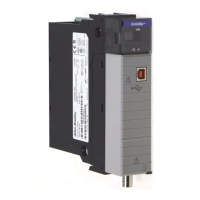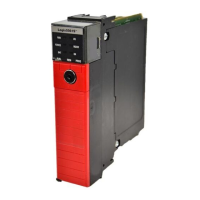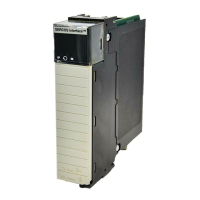Rockwell Automation Publication CNET-UM001F-EN-P - February 2018 89
Function Guidelines
If your MSG is to a module that uses 16-bit
integers, use a buffer of INTs in the MSG
and DINTs throughout the project.
If your message is to a module that uses 16-bit integers, such as an SLC 500
controller, and it transfers integers, not REALs, use a buffer of INTs in the
message and DINTs throughout the project.
This increases the efficiency of your project because Logix 5000 controllers
execute more efficiently and use less memory when working with 32-bit
integers (DINTs).
If you want to enable more than 16 MSGs
at one time, use some type of management
strategy.
If you enable more than 16 MSGs at one time, some MSG instructions may
experience delays in entering the queue. To guarantee the execution of each
message, you can take these actions:
• Enable each message in sequence.
• Enable the messages in smaller groups.
• Program a message to communicate with multiple modules.
• Program logic to coordinate the execution of messages.
Cache connected MSGs that execute most
frequently.
Cache the connection for those MSG instructions that execute most frequently,
up to the maximum number permissible for your controller revision.
This optimizes execution time because the controller does not have to open a
connection each time the message executes.
Limit the number of unconnected and
uncached MSGs to fewer than the number
of unconnected buffers.
The controller can have 10...40 unconnected outgoing buffers:
• The default number is 10.
• If all the unconnected buffers are in use when an instruction leaves the
message queue, the instruction errors and does not transfer the data.
• You can increase the number of unconnected buffers to a maximum of 40.
For more information on programming MSG instructions, see the Logix 5000
Controllers General Instructions Reference Manual, publication
1756-
RM003. The individual system user manuals for Logix 5000 controllers also
provide MSG examples unique to specific controller platforms.
Messages transfer data to other modules, such as other controllers, I/O
modules or operator interfaces. Each message uses one connection,
regardless of how many modules are in the message path. To conserve
connections, you can configure one message to read from or write to
multiple modules. Also, you can configure multiple messages for the same
path and use only one connection if only one message is active at a time;
however, this requires that you write your ladder logic correctly to make sure
that only one message is active at any time.
These connected messages can leave the connection open (cache) or close the
connection when the message has finished transmitting.
Table 22 - Message Connections and Communication Methods
Message Type Communication Method Connection
Required
CIP data table read or write CIP Yes
CIP generic CIP Optional(1)
Block-transfer read or write Not applicable Yes
Connections for
Messages

